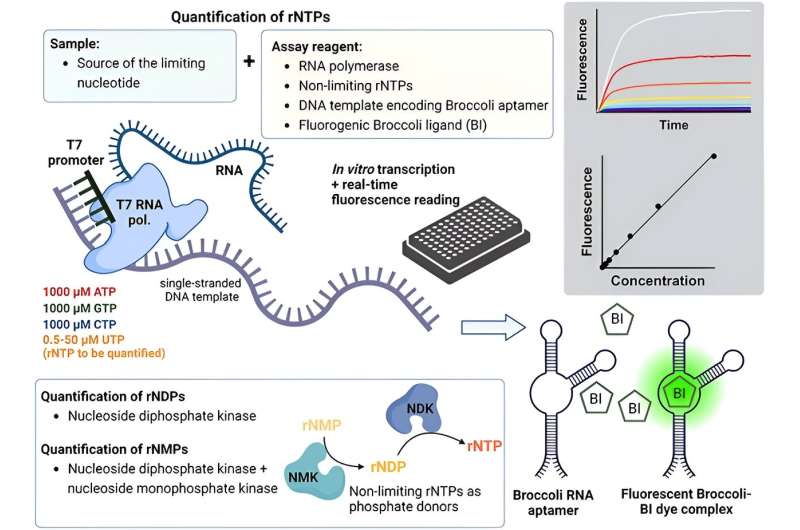This article has been reviewed according to Science X's editorial process and policies. Editors have highlighted the following attributes while ensuring the content's credibility:
fact-checked
peer-reviewed publication
trusted source
proofread
A novel quantification method for ribonucleotides, which are needed in almost all cellular processes

RNA (ribonucleic acid), which is made up of ribonucleotides, is a molecule found in all living organisms. RNA is thought to have probably preceded DNA in primordial life billions of years ago. RNA was eventually replaced by DNA as a chemically more stable carrier of genetic information.
In mitochondrial diseases, which are genetic diseases caused by mutations compromising mitochondrial functions, the biosynthesis of all nucleotides potentially declines. However, little is known about how much, in which tissues, and with what consequences. This knowledge gap is partly because of the lack of suitable methods to measure ribonucleotides in a typical research laboratory without special chromatography equipment.
Now, researchers have developed the first technique that allows easy measurement of all 12 ribonucleotides from small tissue and cell samples without specialized equipment. "Our assay is based on RNA polymerase and a clever fluorescent RNA molecule called Broccoli, which was originally developed by others to allow fluorescence microscopy of RNA in cells," postdoctoral researcher Janne Purhonen says.
In contrast to DNA, which only stores genetic information, RNA has many roles in cells, such as functioning as messenger RNA, transfer RNA and components of ribosomes. Together these RNA forms carry out protein synthesis according to the instructions encoded in DNA. Apart from being building blocks of RNA, the four ribonucleotides and their three phosphorylated forms are vital for almost all cellular processes as energy sources in enzymatic reactions, as precursors in the synthesis of hundreds of other metabolites, and as signaling molecules.
Rapidly dividing cancer cells require large amounts of nucleotides, and several cancer drugs exploit this need by targeting nucleotide metabolism. Also, rapidly dividing immune cells can be dampened with drugs that inhibit nucleotide biosynthesis in autoinflammatory diseases. Because ribonucleotides take part in almost everything in cellular metabolism, the prospects for the utility of the method in basic research are staggering.
The study was carried out by the research group led by docent Jukka Kallijärvi at the Folkhälsan Research Center and at the University of Helsinki and was published in the journal Nucleic Acids Research.
"The best reward for our work would be that the assay will turn out useful to other researchers in many biological and biomedical fields," Kallijärvi sums up.
More information: Janne Purhonen et al, Quantification of all 12 canonical ribonucleotides by real-time fluorogenic in vitro transcription, Nucleic Acids Research (2023). DOI: 10.1093/nar/gkad1091
Journal information: Nucleic Acids Research
Provided by University of Helsinki




















